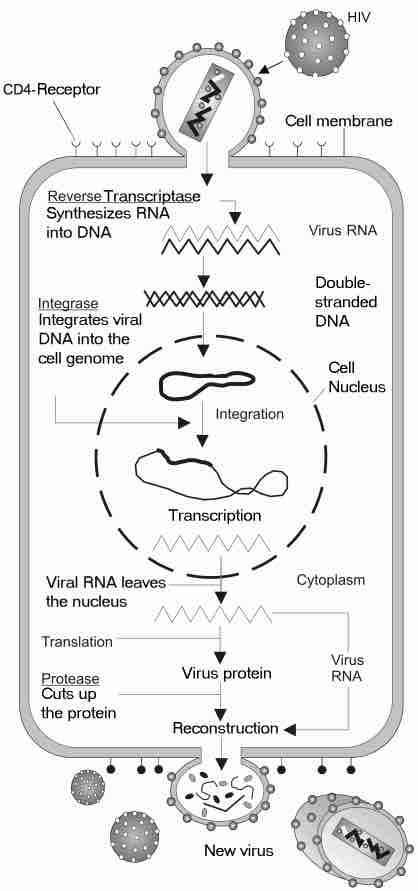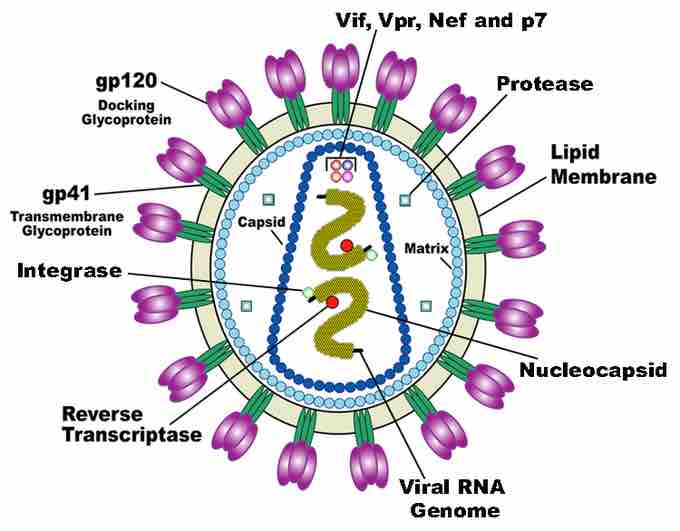HIV entry is the earliest stage of infection in the HIV viral life cycle, occurring when the HIV virus comes into contact with the host cell and introduces viral material into the cell. HIV enters macrophages and CD4-positive T cells (CD4 is a glycoprotein receptor found on cells) by the adsorption of glycoproteins on its surface to receptors on the target cell, followed by fusion of the viral envelope with the cell membrane and the release of the HIV capsid into the cell .

HIV Replication
Steps in the HIV Replication Cycle: Fusion of the HIV cell to the host cell surface.Cell Entry, HIV RNA, reverse transcriptase, integrase, and other viral proteins enter the host cell.Viral DNA is formed by reverse transcription.Viral DNA is transported across the nucleus and integrates into the host DNA.New viral RNA is used as genomic RNA to make viral proteins.New viral RNA and proteins move to cell surface and a new, immature, HIV virus forms.Virus maturation and protease release of individual HIV proteins.
Entry to the cell begins through interaction of the trimeric envelope complex and both CD4 and a chemokine receptor on the host cell on the cell surface. The HIV coat protein, gp120, binds to integrin α4β7, activating LFA-1 (the central integrin involved in the establishment of bridges known as "virological synapses") which facilitate efficient cell-to-cell spreading of HIV-1.
After attachment, the HIV viron must next fuse with the host cell. The first step in fusion begins after the attachment of the CD4 binding domains of gp120 to CD4. Once gp120 is bound with the CD4 protein, the envelope complex undergoes a structural change, exposing the chemokine binding domains of gp120 and allowing them to interact with the target chemokine receptor. This allows for a more stable two-pronged attachment, which allows the N-terminal fusion peptide gp41 to penetrate the cell membrane. Repeat sequences in gp41, known as HR1 and HR2, then interact, causing the collapse of the extracellular portion of gp41 into a hairpin . This loop structure brings the virus and cell membranes close together, allowing fusion of the membranes and subsequent entry of the viral capsid.

Origin of HIV-1 M: An Example of Molecular Clock Application
The attachment and fusion of HIV virons to host cells are crucial to allowing HIV infection to occur. Shown in purple is gp120 and in green gp41, two proteins crucial in viral docking to host cells.
After HIV has bound to the target cell, the HIV RNA and various enzymes (including reverse transcriptase, integrase, ribonuclease, and protease) are injected into the cell. Because HIV attachment is critical for the HIV replication cycle, understanding the specific mechanisms through which HIV attachment occurs has implications for potential treatments of HIV.